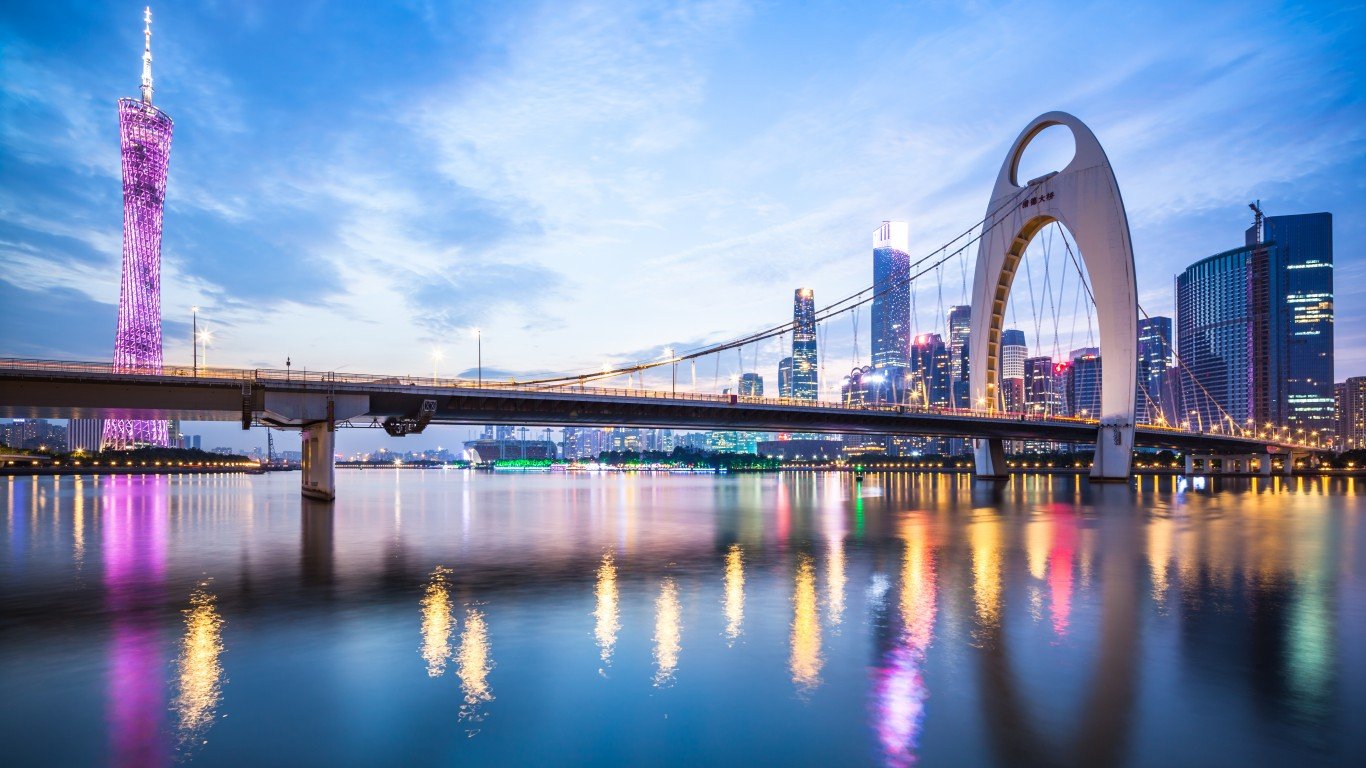
10. Guangzhou, China
> Population (2021): 13.64 million
Once known as Canton, this ancient port and transportation center in the Pearl River Delta is one of the most populous cities in China. The Ocean Health Index classifies about a fifth of its urban area as being at high or extreme risk for the effects of sea level rise. There are almost 2,000 miles of seawalls and other flood barriers protecting Guangzhou and other delta metropolises, but if water levels rise by a foot, many of them would be overwhelmed.
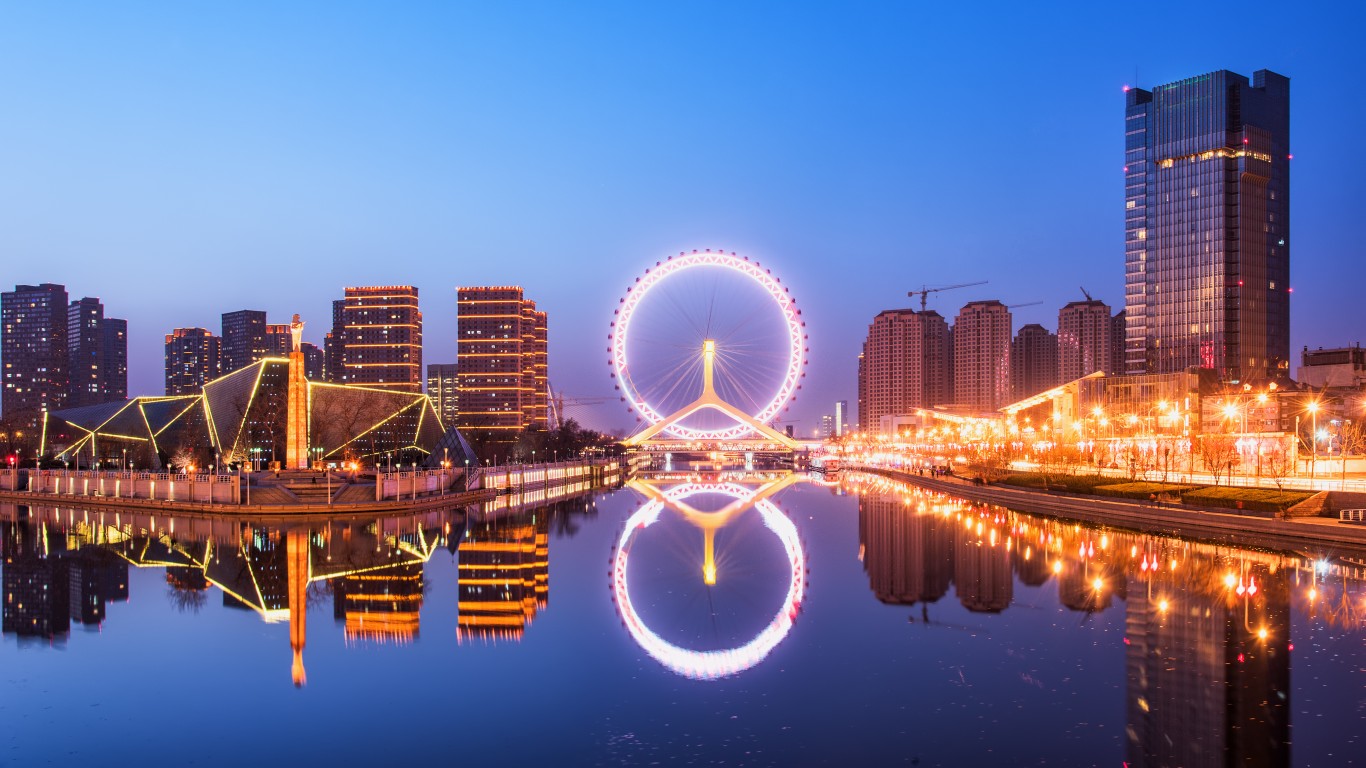
9. Tianjin, China
> Population (2021): 13.79 million
Some 285 Fortune 500 companies have offices in this major economic hub in the low-lying basin of the Hai River, a tributary of the Yangtze. Noting that “It already suffers from flooding during heavy downpours, and rising water levels will hamper its struggling drainage systems,” Earth.Org estimates that in a worst-case scenario, as much as 82% of its population could be displaced by 2100.
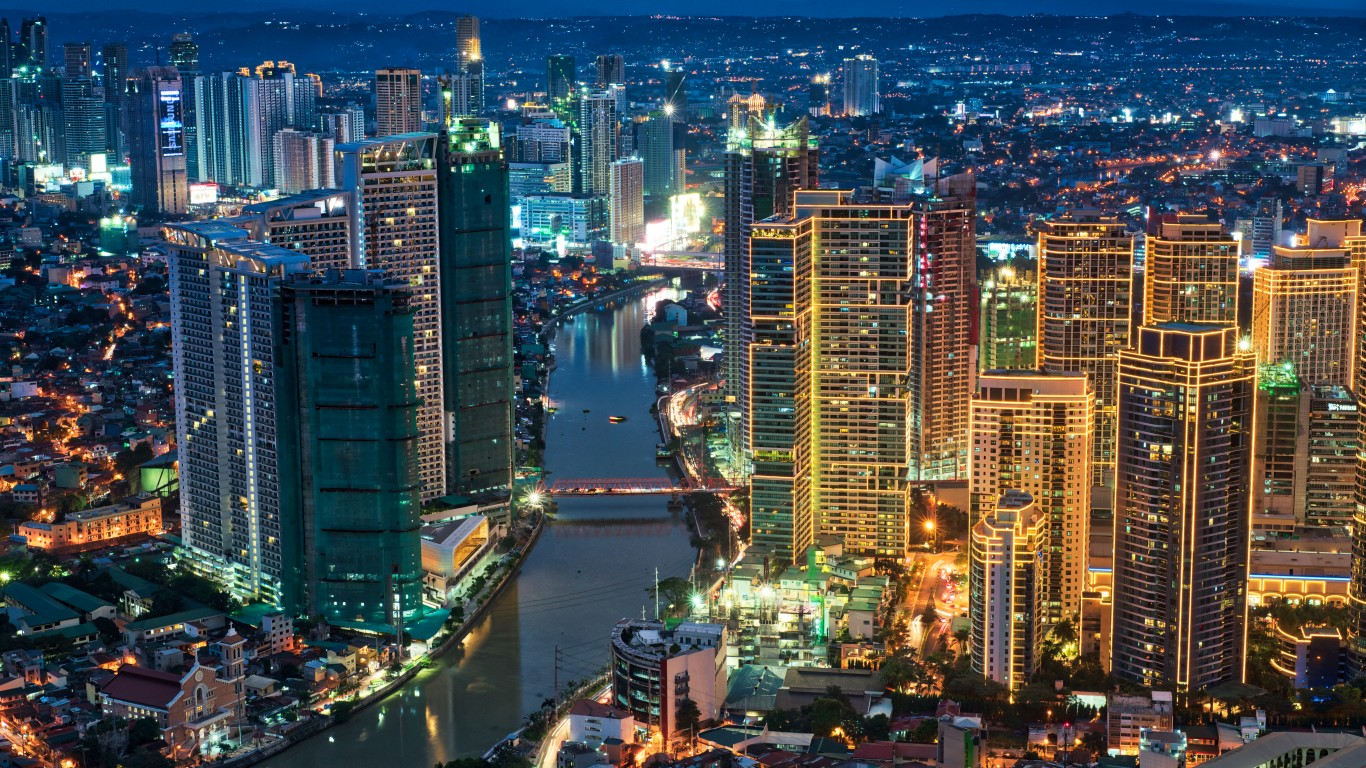
8. Manila, Philippines
> Population (2021): 14.16 million
Residents of the Philippines capital are no strangers to flooding, both from seawater and from heavy rainfall — the country endures more than 20 typhoons a year — that can’t be adequately drained. Depletion of aquifers beneath the city has sunken parts of Manila below sea level — and the level of Manila Bay is rising four times faster than the worldwide average. A majority of the city’s residents could be seriously affected by flooding as early as 2030.
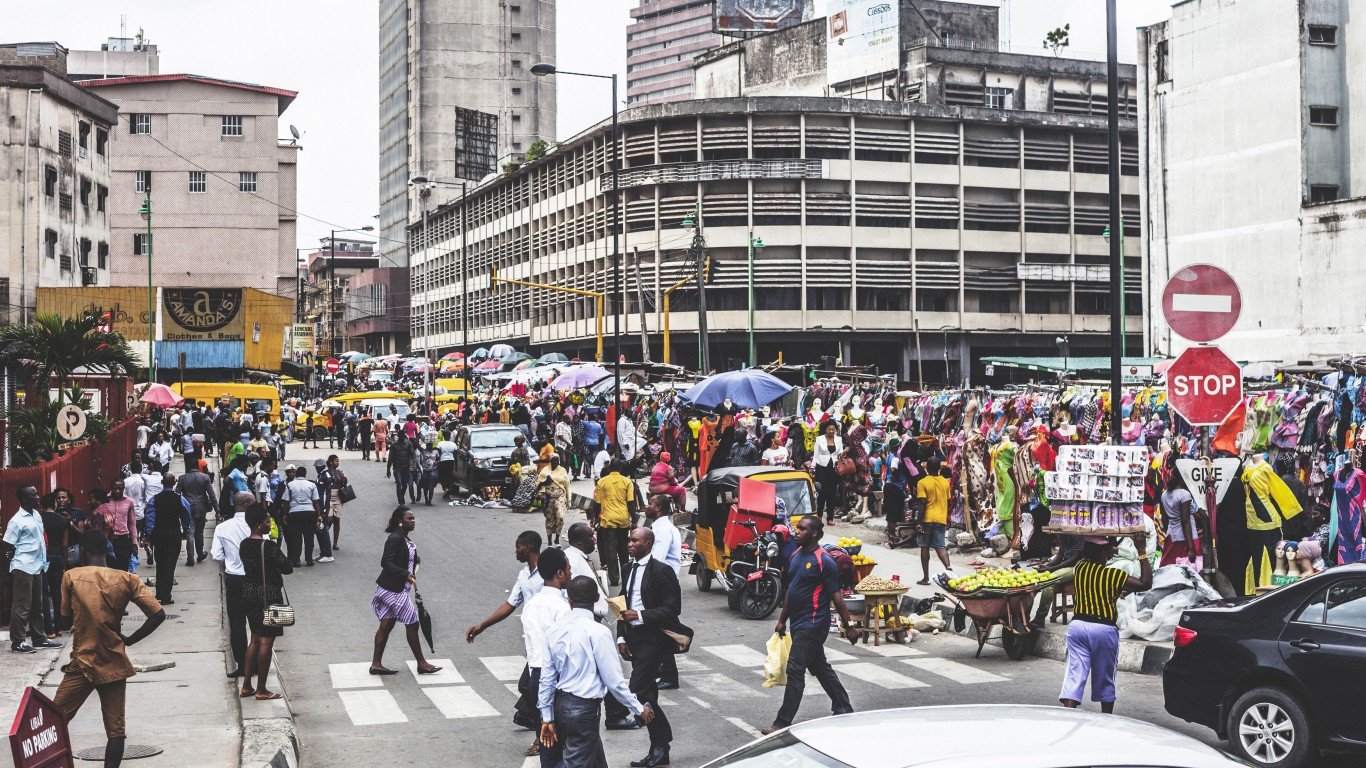
7. Lagos, Nigeria
> Population (2021): 14.86 million
The economic capital of Nigeria, the most populous country in Africa, Lagos is in danger not only because of rising sea level and run-off from rivers, but also because its drainage systems are in disrepair and often clogged with debris. “In Lagos, the run-off is not well managed,” an environmental expert told The Guardian. According to Earth.Org, 32% of the city’s population could be displaced by 2100.
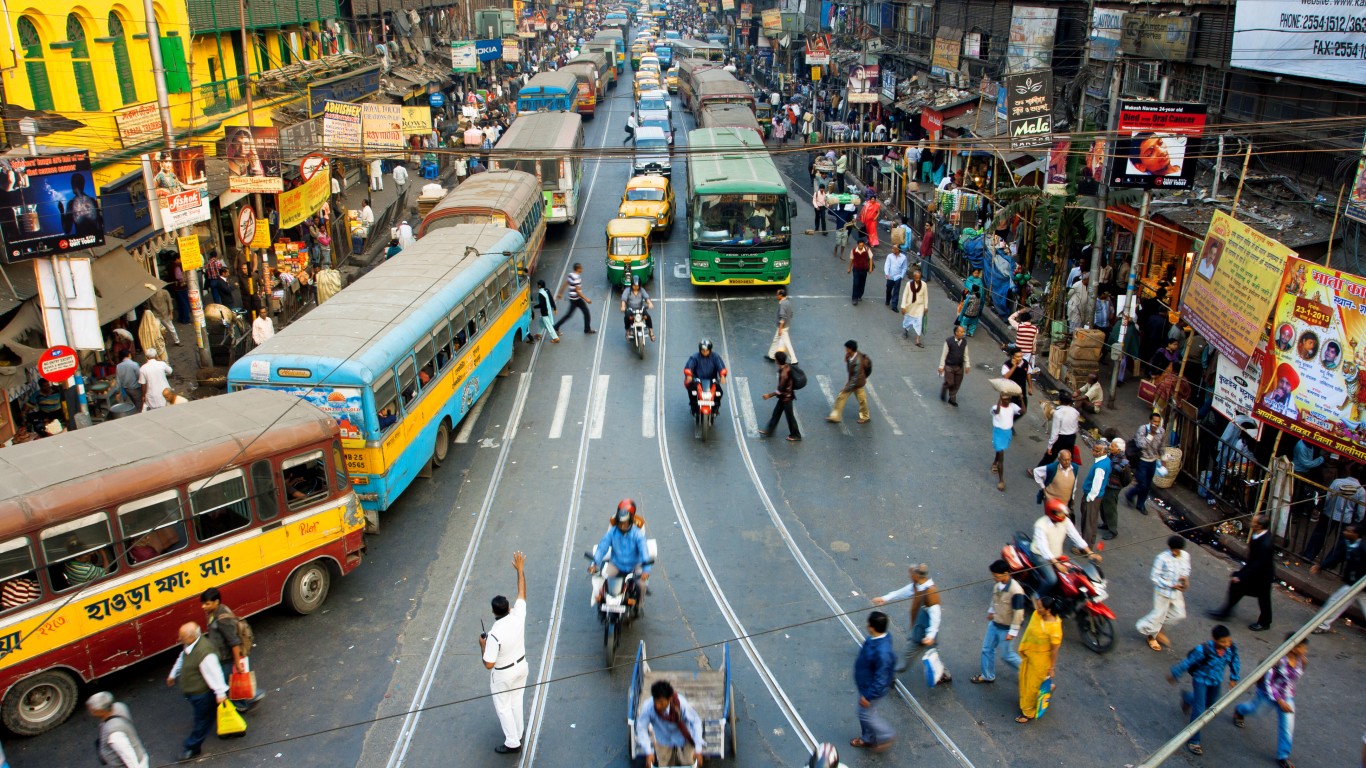
6. Kolkata (Calcutta), India
> Population (2021): 14.97 million
Two years ago, the Times of India identified Kolkata as being potentially “the worst-hit among Indian coastal cities as sea levels rise due to global warming.” By 2050, the Times added, virtually the entire city and its suburbs would be at risk of annual flooding “affecting many more million people than previously believed.” Almost the entire population could be forced from their homes.






